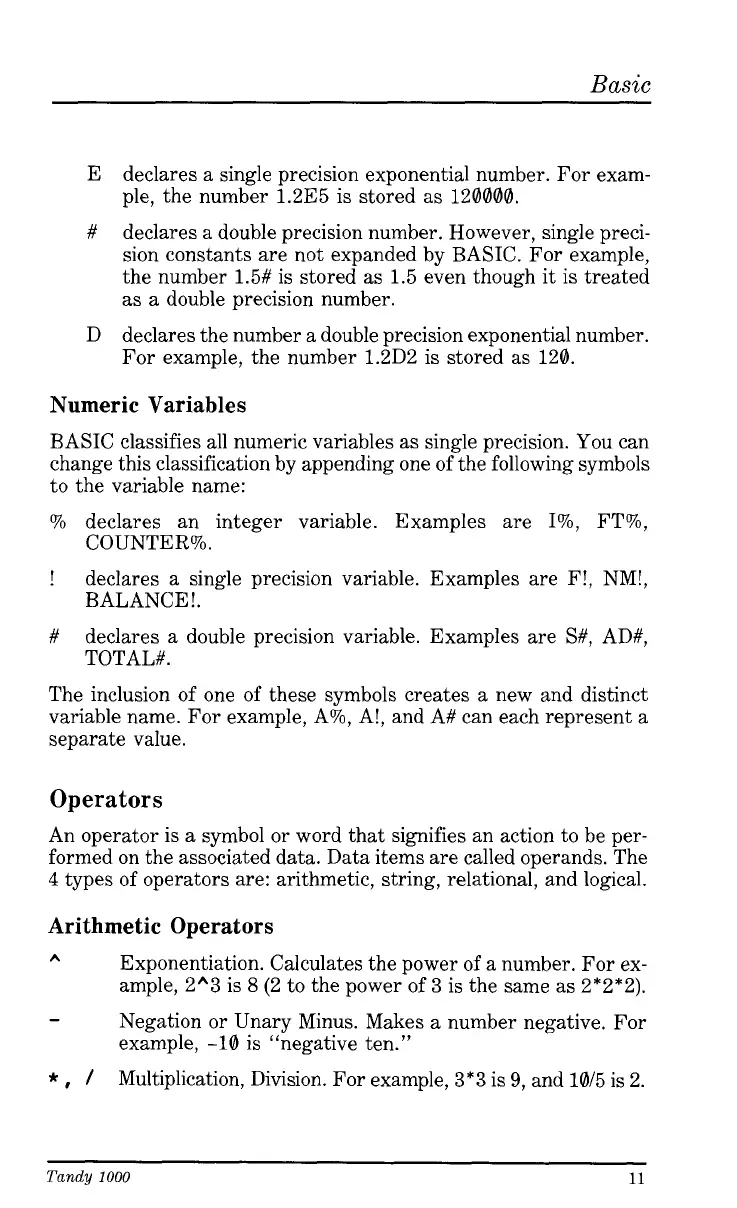Basic
E
declares a single precision exponential number. For exam-
ple, the number 1.2E5 is stored as 120000.
declares a double precision number. However, single preci-
sion constants are not expanded by BASIC. For example,
the number 1.5# is stored as 1.5 even though
it
is treated
as a double precision number.
D declares the number a double precision exponential number.
For example, the number 1.2D2 is stored as 120.
#
Numeric Variables
BASIC classifies all numeric variables as single precision. You can
change this classification by appending one of the following symbols
to the variable name:
YO
declares an integer variable. Examples are
I%,
FT%,
COUNTER%.
!
declares a single precision variable. Examples are
F!,
NM!,
BALANCE!.
#
declares a double precision variable. Examples are
S#,
AD#,
TOTAL#.
The inclusion of one of these symbols creates a new and distinct
variable name. For example, A%, A!, and A# can each represent a
separate value.
Operators
An operator is a symbol or word that signifies an action to be per-
formed on the associated data. Data items are called operands. The
4
types
of
operators are: arithmetic, string, relational, and logical.
Arithmetic Operators
A
Exponentiation. Calculates the power
of
a number. For ex-
ample, 2”3
is
8
(2 to the power
of
3
is the same as 2*2*2).
Negation or Unary Minus. Makes a number negative. For
example, -10
is
“negative ten.”
Multiplication, Division. For example,
3*3
is
9,
and 10/5 is 2.
-
*
,
/
Tandy
1000
11
